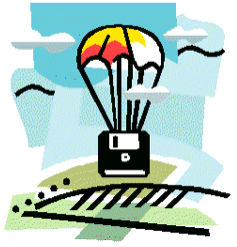Automatic Testing: The Test Engineers’ Role
What you will learn:
This course covers every aspect of a test engineer’s responsibility. You will learn how to select an automatic test equipment (ATE) from the number of choices and generically different types available. You will learn how to build an ATE from instrumentation and other building blocks. You will learn instrument bus technologies for the classic (but still available) IEEE 488, VXIbus, to more cost-effective PC-based instruments. You will also learn the software issues. The course will teach you how to approach a functional test programming activity for digital circuits. Finally, you will learn test management issues, such as test program development estimation, acquisition and quality assurance.
Abstract:
This course provides a test engineering curriculum. From a quick introduction of ATE, the course goes on to test strategies. Test requirements and test specifications are discussed in detail. Next, the course dissects the ATE and looks closely at Stimulus, Measurement, and Switching Instruments. The IEEE 488 (GPIB or HPIB) and the PC bus is introduced and the VXIbus is examined in detail. The course also covers, PXI, LXI and AXIe. ATE maintenance issues and specmanship is also covered. The course then provides a structured approach to test program development. Simulation and Automatic Test Pattern Generation (ATPG) is explored. ATE languages, such as ATLAS, are also discussed. Finally, the students are taught how to estimate and manage test engineering resources.

Who should attend:
This course offers an in-depth education in test engineering that is missing from the university curriculum. Every test engineer, whether new to the field or already experienced will greatly benefit from the structured approach this course provides. Anyone dealing with Design for Testability issues will also find this course an important prerequisite. Technically savvy engineers from other disciplines, such as design engineering will find the curriculum useful and exciting. Understanding of Test Engineering problems is probably the best way for a designer to figure out how to make circuits more testable. A good prerequisite to this course is “Automatic Testing: Management’s Role.”
Course Content
Introduction
• Reviewing topics covered in “Automatic Testing: Management’s Role.”
- Introduction to Automatic Testing
- Testing Methods
- Test Economics
- Test Strategy Development
- Test Requirements
ATE Building Blocks
- Stimulus Subsystems
- Measuring Subsystems
- Routing Subsystems
Introduction to GPIB, HPIB, IEEE 488.1 and 488.2
Introduction to the VXI Bus
VXI Plug&Play Alliance
LXI and Instrumentation on the Internet
AdvancedTCA Extensions for Instrumentation and Test (AXIe)
PC-Based Instruments and PXI
Test Executive and Test Software
ATE Maintenance
- Upgrading an ATE
- ATE Reliability
- Sources of ATE Errors
ATE Buy/Build Decision
Digital Test Programming
Functional Board Testing
- Stuck-at Fault Models
- Fault Detection
- Fault Isolation
- Path Sensitization
Simulation
- The Simulation Model
- Good Circuit Simulation vs. Fault Simulation
- Fault Scoring
- Guided Fault Probing
- Fault Dictionary
Analysis Before Coding
- Testability Concerns
- Timing Considerations
- Bus Considerations
Interfacing
- Mechanical Interfacing
- Electrical Interfacing
- Test Adapter Design
- Test Adapter Test
The Test Strategy Report (TSR)
- Why we need TSRs?
- Contents of the TSR
- TSR Review Process
Example Test Program
Automatic Test Pattern Generation (ATPG)
- When is ATPG useful?
- ATPG Techniques
- Limitations of ATPG
ATE Languages
- Characteristics
- Standardization
- ATLAS
- ATE Language Translation
Analog Testing
Topics can be included here from the course “Analog Test and Fault Isolation.”
Managing Automated Test
Managing Test Resources
- TPS Cost Estimation
- TPS Acquisition
- In-House TPS Development
- TPS Quality Assurance
- The Test Strategy Report
Managing Various Test Functions
- Design for Testability
- Production Testing
- Software Testing
- Maintenance Testing
- Field Return Testing
- Concurrent Engineering
Three-degrees of Test Engineering Freedom
Making the UUT more testable
- Design for Testability Guidelines
- JTAG/IEEE-1149.x Boundary Scan
- Built-In Self Test
Constructing the ATE
- Improving the ATE
- Better Instruments
- Better System Integration
Improving the Test Programs
- Reusable Tests
- Test Development Tools
- Scalable Tests
Summary and Conclusions
- Questions/Answers
Pre-Requisite Course
The 1-day course, “Automatic Testing: Management’s Role” offers a good, albeit less technical pre-requisite for this course. Those new to test engineering may wish to take that pre-requisite.
Instructor:
Louis Y. Ungar
Louis Y. Ungar, President of Advanced Test Engineering (A.T.E.) Solutions, Inc. holds a B.S.E.E. and Computer Science degree from UCLA and has completed course work towards a M.A. in Management. As a test engineer, Mr. Ungar designed automatic test equipment (ATE), created hundreds of test programs for dozens of ATEs. As a design engineer he designed payload systems for the Space Shuttle, eventually leading a team of designers. With both engineering and management experience in test and design, Mr. Ungar founded A.T.E. Solutions, Inc. in 1984, a highly respected test and testability consulting and educational firm. Mr. Ungar serves as Testability Committee Chair for the Surface Mount Technology Association (SMTA), as Consultant to the American Society of Test Engineers (ASTE), the founding President of the Testability Management Action Group (TMAG) and various test and testability groups of the Institute of Electrical and Electronics Engineers (IEEE). He has recently balloted on the IEEE-1149.1-2013 and the IEEE-1687. He also developed the Testability section of a Design for Excellence (DFX) Guideline by the IPC to be published in 2018.
Other qualified A.T.E. Solutions, Inc. instructors may teach this course.
Availability:
Private Forum:
Date: Your choice
Length: 2-days
Location: Los Angeles
Price: Request a Quote
Onsite:
Date: Your choice
Length: 2-days
Location: Your choice
Price: Request a Quote
On-Site Webinar:
Date: Your choice
Length: 8 x 90 min modules
Location: Via Internet
Price: Request a Quote
CourseNotes:
Format: PDF File
Distribution: emailed
Price: $299.50
» Buy Now
